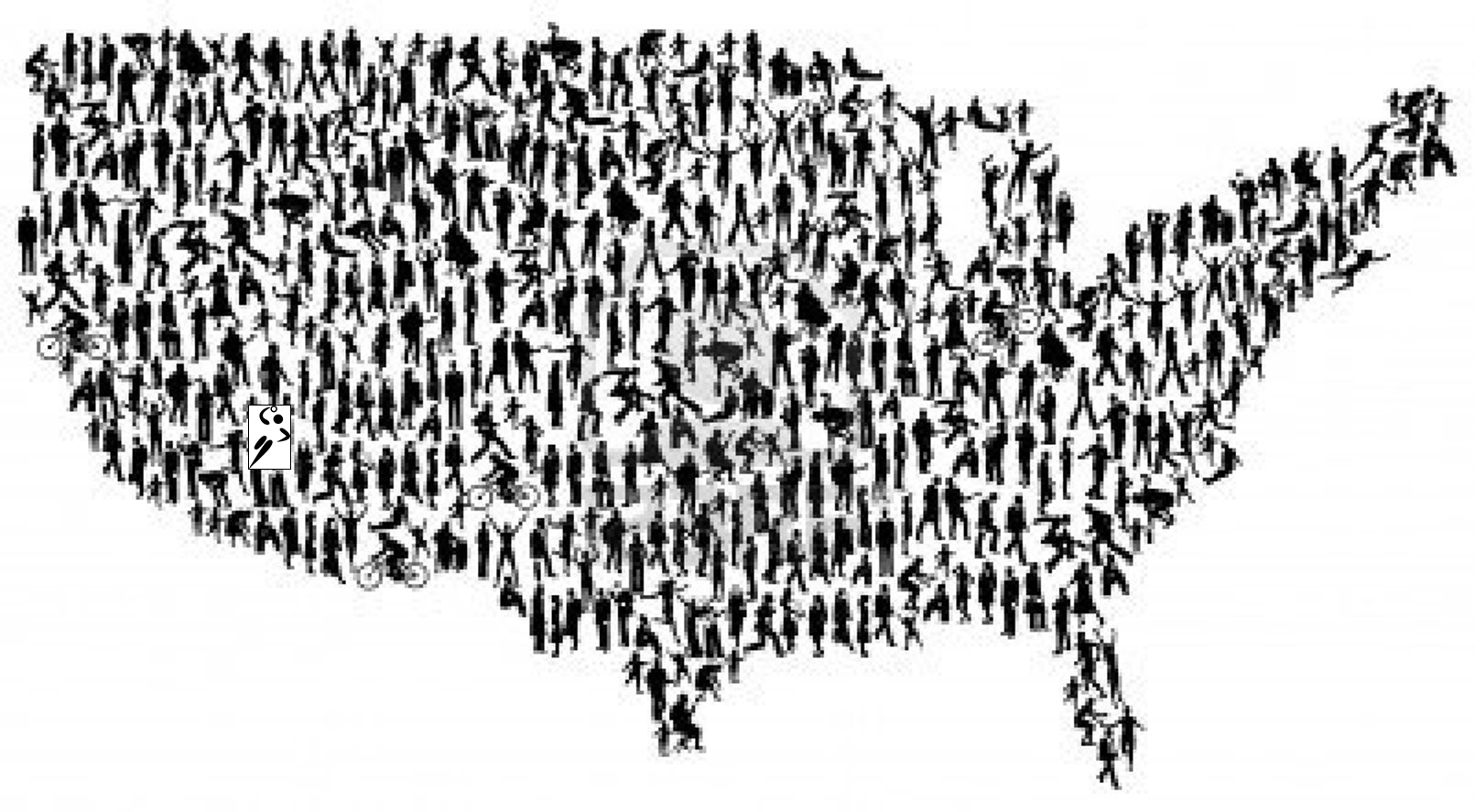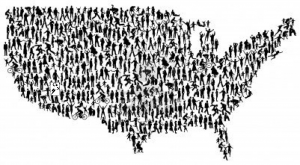In Part 4, I pointed out that one factor limiting sponsor funding was the reality that there are very few followers of Team Handball in the U.S. In Part 5 I try to explain why there are so few and why this is such a big reason for the sports lack of success. (Part 1, Part 2, Part 3)
Well, pretty much every American who’s ever been involved with the sport knows that it’s a little known sport in this country, but how “little known” is it. Over the years I’ve addressed this from a number of different angles. For the benefit of new readers, however, I’ll rehash the basic issues. First, though, I’ll try to quantify the problem a bit.
Just how lacking is this “lack of awareness?”
Despite some positive inroads and gains over the 25 years or so that I’ve followed the sport, the reality is that the footprint for Team Handball in the U.S. is extremely small. How extremely small? Well, without the benefit of a sophisticated survey it’s pretty tough to definitively qualify the sport’s popularity and awareness quotient. Lacking that survey, I’ve put together some numbers based on personal experience, informed speculation and extrapolation.
Basic Awareness
I’ll define basic awareness as anyone who when asked could give a short simple explanation of the sport. I suspect that if a poll were taken you would get probably around 5% of Americans to pass that basic test. This may seem overly pessimistic to some American Team Handball followers because they’ve preached the gospel to virtually every friend and acquaintance in their life. And as a sports fan you’re also likely hanging out with fellow sports fans who are more likely to pass the basic awareness test. For instance, if you were to conduct a survey at a sports bar you could probably get a 25% response. Ask the right expat community in New York, you might get 75%. But, at a random chruch or a concert hall, you might be lucky to get 1 in a 100. The timing of such a survey would also skew the results. With the Olympics still fresh in more people’s minds, you could maybe bump up the average to 10% or more, but as the Olympics fades into memory the casual fan might forget the few minutes that he perused a couple of years ago while flipping through the channels on his TV.
A necessary diatribe on semantics
There are a number of reasons behind this low awareness quotient, but one of the biggest reasons is the existence of another, unrelated sport sharing the same name, “Handball.” For the benefit of our readers, not living in the U.S, Canada, Ireland and Australia, this other Handball sport can best be described as “racquetball with your hands.” And without question this “Handball” is more well known and popular in these countries. While it’s easy to dismiss this as a minor semantics issue it has undoubtedly hurt the development and marketing of the sport in the U.S. On a basic level it creates a remarkable amount of confusion and always requires a short diatribe to explain the sport.
In a broader context it hampers the “branding” of the sport in the consciousness of Americans. If you consider that companies often spend millions of dollars figuring out what to name a product in the hopes that consumers will remember that product you get a sense that this little semantic problem is really a big one with no simple solution.
Well, theoretically there is a simple solution in that an entirely new name could be christened for the sport. And this has been done halfway in the U.S. with the addition of the “Team” in Team Handball. Unfortunately, this only half solved the problem as the name still causes more confusion then distinction. And other names have been used. In some parts of Canada the sport is referred to as E.T.H. European Team Handball as a further modifier and in Ireland it’s referred to as Olympic Handball. I like the Irish name for it immediate conjures up the Olympic Games, but I’m not so sure as to whether the protective USOC would allow the use of the Olympic name. A more radical solution would be to come up with an entirely new name like Goalball, but then that would create a whole host of new problems like the marketing that would be required. Not to mention the resistance that would surely follow from traditionalists that can stand even the “Team” modifier.
If your sport isn’t on TV it doesn’t matter
Aside from the semantics problems there are a number of other issues related to so few people even knowing the sport exists. As was touched upon previously, the dominance of basketball in the U.S. has made it tougher for a similar indoor sport to gain traction. There is also a tremendous dearth when it comes to stories in the press, which is why it’s always a cause for minor celebration in the USA Team Handball community when some reporter writes a nice story on the sport in a major newspaper. Without question, though, the lack of TV broadcasts is the biggest reason behind the sports low awareness quotient.
During the 2008 and 2012 Olympics I’ve seen the impact of TV first hand as the traffic to our website increases by leaps and bounds. Here’s one anecdote for you. During the MSNBC broadcast of a women’s match between Sweden and Denmark on the first day of the Olympics I watched our current unique visitors jump from 20 to 370 in the space of 15 minutes. So that means that roughly 350 Americans sitting on their couch grabbed their iPad or their laptop and typed “Team Handball” into Google and clicked on the link for Team Handball News. And those are just the individuals with that level of curiosity. Thousands more undoubtedly checked out other websites or simply watched this “new” sport for the first time. And this is on MSNBC, a network that normally shows news that is temporarily hijacked during the Olympics every four years. We could argue about whether the basic awareness of the sport is 2%, 5% or 8%, but I don’t think anyone would argue that broadcasts like this caused this number to jump significant amounts
1 in a million: The need for real fans and real awareness
But, increasing “basic awareness” is just the first battle to be fought. If the sport is to truly grow and develop in this country the sport needs more real fans. And this is where the title of this article comes into play. The number of really devoted fans and athletes of the sport in the U.S. is an incredibly small number. There are a few metrics and anecdotes that bear this out pretty starkly: USA Team Handball membership has hovered around the 300-500 mark for decades. The collegiate championship for several years has featured only 3 or 4 schools. (And often West Point accounts for 2 of the teams.) Tryouts/selections for national teams, particularly at younger levels sometimes involves simply finding any players. Club championships in recent years have become more and more an Expat convention with native born Americans in the minority.
All of these anecdotes lead to my conclusion, that in the U.S. there are maybe around 300 real fans of the sport. Somebody, who when asked, “Hey, what’s your favorite sport?” without hesitation replies Team Handball. As the U.S. population is moving in on the 312 million mark, I’ll put the number at 312, so the devoted few can proudly claim they are 1 in a million.
The impact of this stark reality hardly needs explanation. How can the U.S. expect to field quality teams with such a small talent pool to work with? How can the U.S. attract big sponsorship deals when such a deal results in minimal exposure? As I’ve pointed out in this series the U.S. has a lot of challenges, but this lack of awareness is probably as close as there is to a root problem. If this problem is fixed then more funding and finding/developing better players will become far more easier. Yes, step one is changing 1 in 1,000,000 to 1 in a 100,000 and then 1 in 10,000.
So that quantifies the extent of the problem in terms of awareness. And, of course, it begs the question, why isn’t more being done to fix it. In Part 6, I’ll further address the struggle and challenges involved with with getting the sport on TV more.

